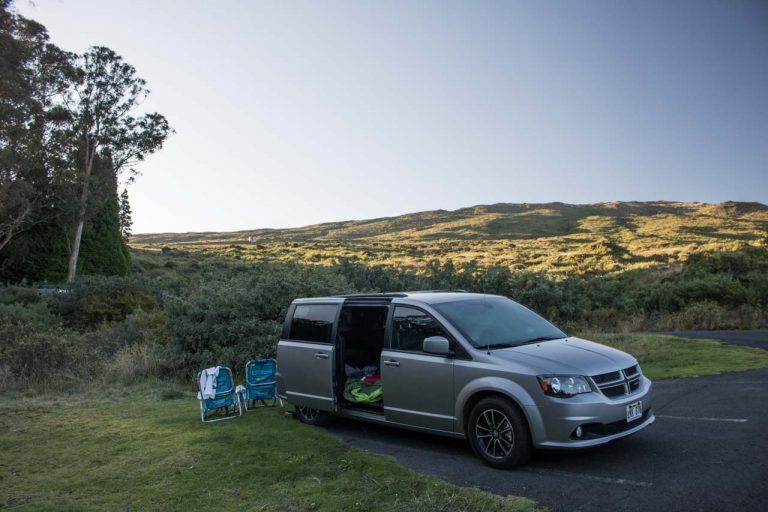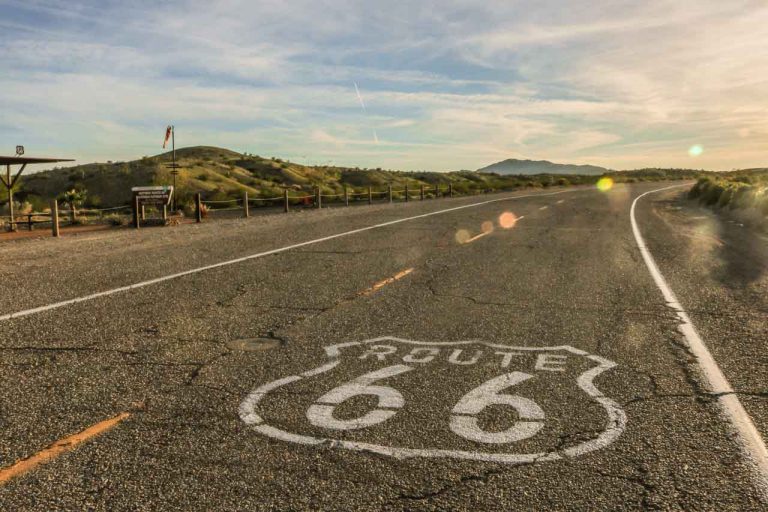10 Jaw-Dropping Views in Hawai‘i Volcanoes National Park
Covering nearly the entire southern half of the Big Island of Hawaii, Hawai‘i Volcanoes National Park is home to two active volcanoes, tropical rain forests, lava fields and abundant Hawaiian wildlife. You can see these amazing features from numerous scenic overlooks and views in Hawai‘i Volcanoes National Park.
The park’s main tourist area is around the Kīlauea volcano, which has its own scenic drive, most visitor facilities, and is the start of the road down to the southern coast. You’ll find many of the top views in Hawai‘i Volcanoes in this area.
Other park areas include the Mauna Loa Road and the less-visited Kahuku Unit in the southwest. Both of those also have some scenic views to enjoy.
This blog post about the greatest scenic views in Hawai‘i Volcanoes National Park contains affiliate links. You can read more about our Terms of Use / Disclosure here.
10 Best Scenic Views in Hawai‘i Volcanoes National Park
The following scenic views in Hawai‘i Volcanoes National Park are absolute highlights of this UNESCO World Heritage-listed Hawaiian national park.
Whether you’d like to see the meeting point of lava flows and rain forest, enjoy a spectacular crater view, or take in a breathtaking panorama of the Big Island’s south coast, these are the places to go.
We’ll start with the Hawai‘i Volcanoes views and overlooks on the Chain of Craters Road and other areas away from the Kīlauea caldera, including Mauna Loa and Kahuku. The five best views of the magnificent Kīlauea caldera itself are last on this list.
Best Views of Mauna Loa, Coast and Other Hawai‘i Volcanoes Areas
1. Kealakomo Overlook
Location: Chain of Craters Road
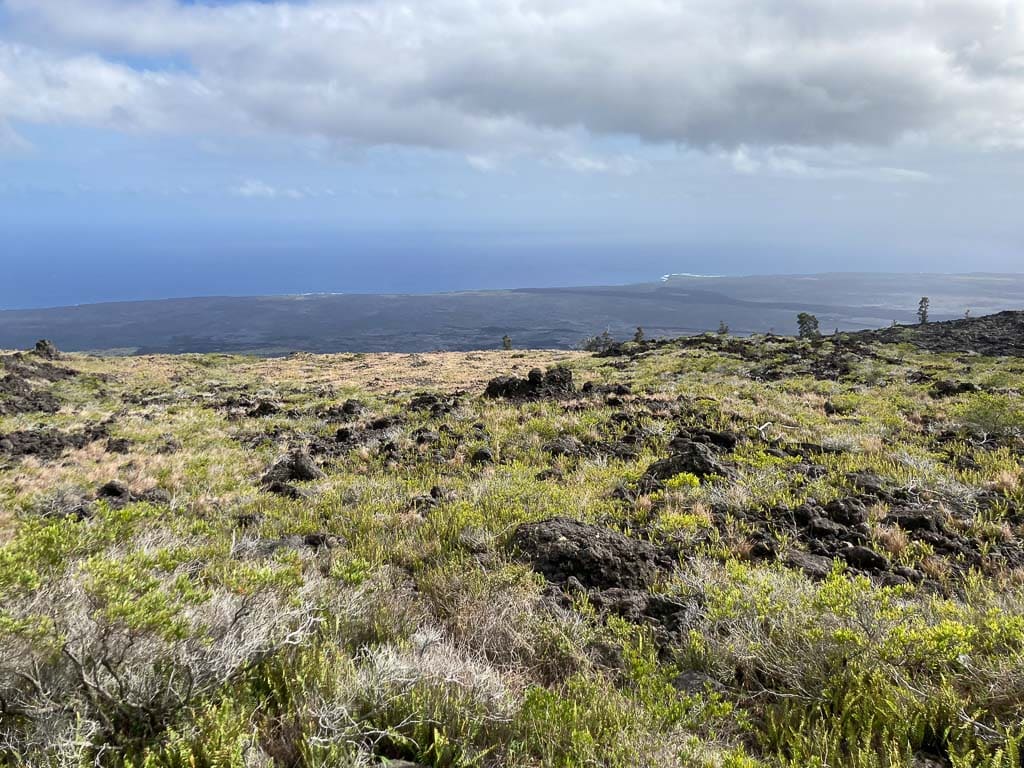
Situated at the top of the Hōlei Pali cliffs on Kīlauea’s southern flank, the Kealakomo Overlook offers a spectacular panoramic view of the Pacific Ocean and coast.
This popular overlook is on the Chain of Craters Road, which winds its way down to the coast from the Kīlauea crater. From the overlook, you can also see the sprawling lava field that covered parts of the ancient coastal village of Kealakomo during the 1969-1974 Maunaulu flows.
2. Hōlei Sea Arch
Location: Chain of Craters Road
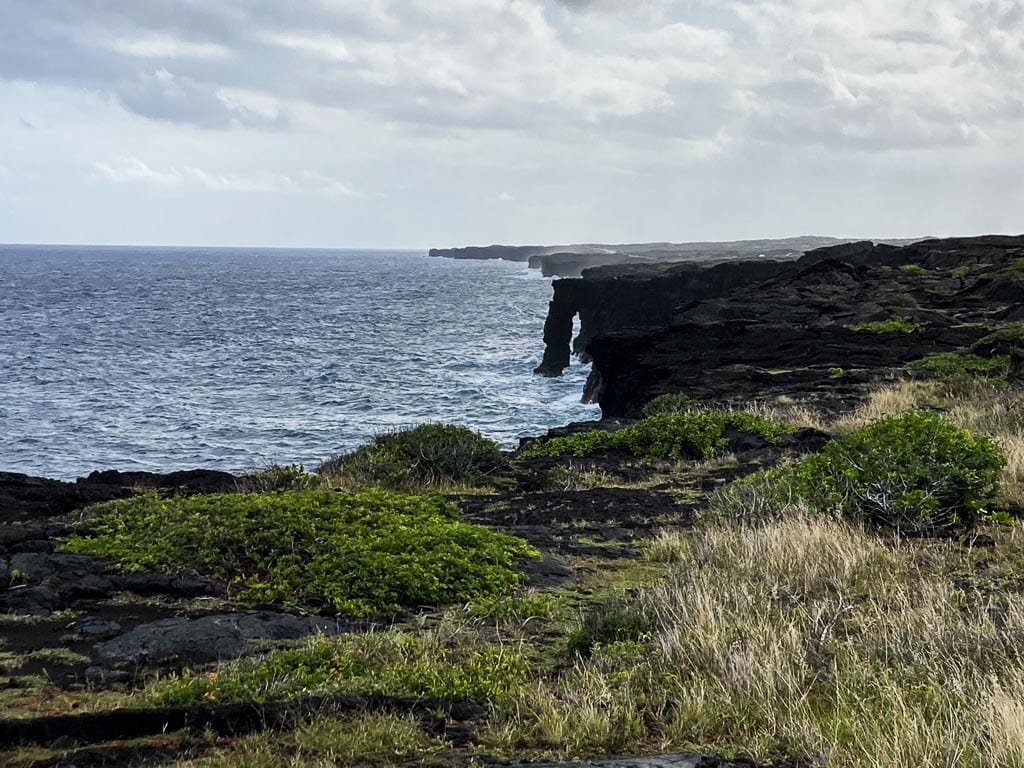
One of the top sights in Hawai‘i Volcanoes National Park, the Hōlei Sea Arch stands at the current terminus of the Chain of Craters Road. (It used to continue along the coast until lava flows buried the road.)
The Hōlei Sea Arch viewpoint is about 1,000 feet past the end of the Chain of Craters Road.
An impressive 90-feet-high lava rock formation, this sea arch was carved from a 550-year-old lava flow through so-called “differential erosion”, which essentially means that hard rock remains, while softer rocks are eroded away by wind and water.
The Hōlei Sea Arch, too, though, will eventually crumble and crash into the Pacific Ocean.
3. Mauna Loa Overlook
Location: Mauna Loa Road
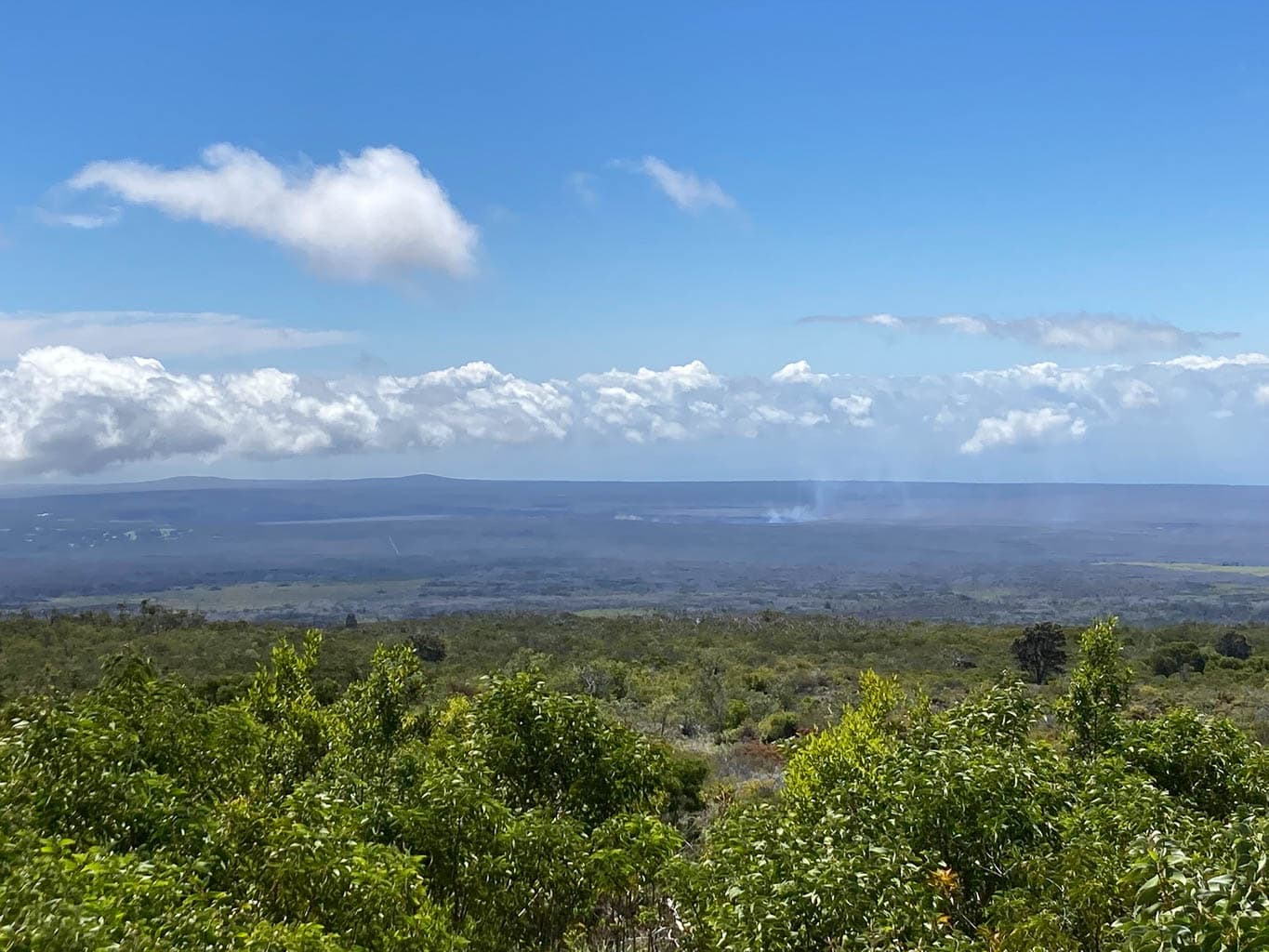
If you’d like to explore the world’s largest active volcano, you should definitely drive the 12-mile Mauna Loa Road. Starting off of Highway 11, just west of Volcano Village, this scenic road meanders up the southeast slope of Mauna Loa to a viewpoint.
The view from the Mauna Loa Overlook doesn’t actually include massive Mauna Loa itself, though. Instead, it looks down toward the steaming Kīlauea caldera and the surrounding lava fields and forests.
This is also the starting point of the epic Mauna Loa Trail, which does lead to the summit of the world’s biggest active volcano—it’s a 2-to-3-day hike one way.
4. Maunaiki and Kaʻū Desert
Location: Highway 11
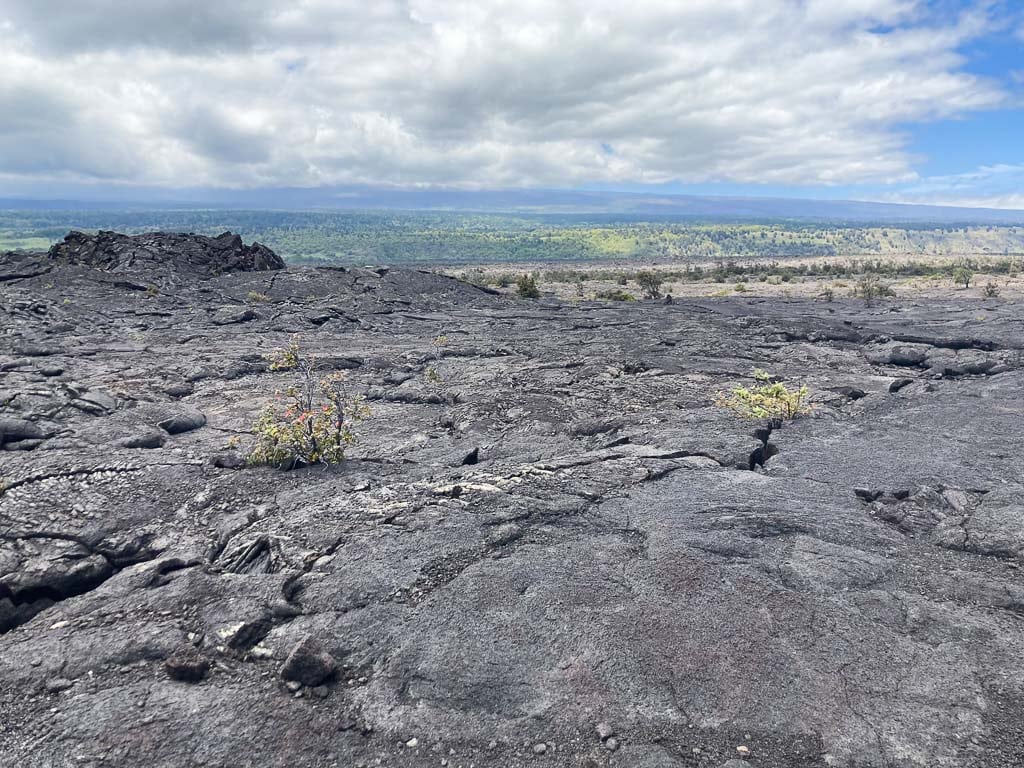
One of the most fascinating landscapes at Hawai‘i Volcanoes awaits in the barren Kaʻū Desert, which occupies a large part of Kīlauea’s Southwest Rift Zone.
The Kaʻū Desert is accessible from the Hilina Pali Road or via Highway 11, both via hiking trails. The easiest and shortest option is the trail that begins on Highway 11.
This fantastic trail passes by the remarkable Footprints Shelter, displaying the left-behind footprints of traveling Native Hawaiians who, in 1790, were caught by a deadly torrent of ash and hot gas raining down from the erupting Kīlauea above.
The trail eventually brings you to Maunaiki, the “little mountain,” which erupted in 1919-1920 and produced the vast lava field of the Kaʻū Desert.
Although there are no particular panoramic overlooks in this part of Hawai‘i Volcanoes National Park, the area is exceptionally barren and open, an uninterrupted expanse of lava fields, cinder cones and cracks. “A desolate, moon-like environment,” the National Park Service calls.
From certain elevated spots, you can see for miles across the Kaʻū Desert. Additionally and worth noting, when looking north from Maunaiki, you can see the full majesty of Mauna Loa.
It’s 1.8 miles one way from the Kaʻū Desert Trailhead on Highway 11 to Maunaiki.
5. Pu‘u o Lokuana Cinder Cone
Location: Kahuku Unit
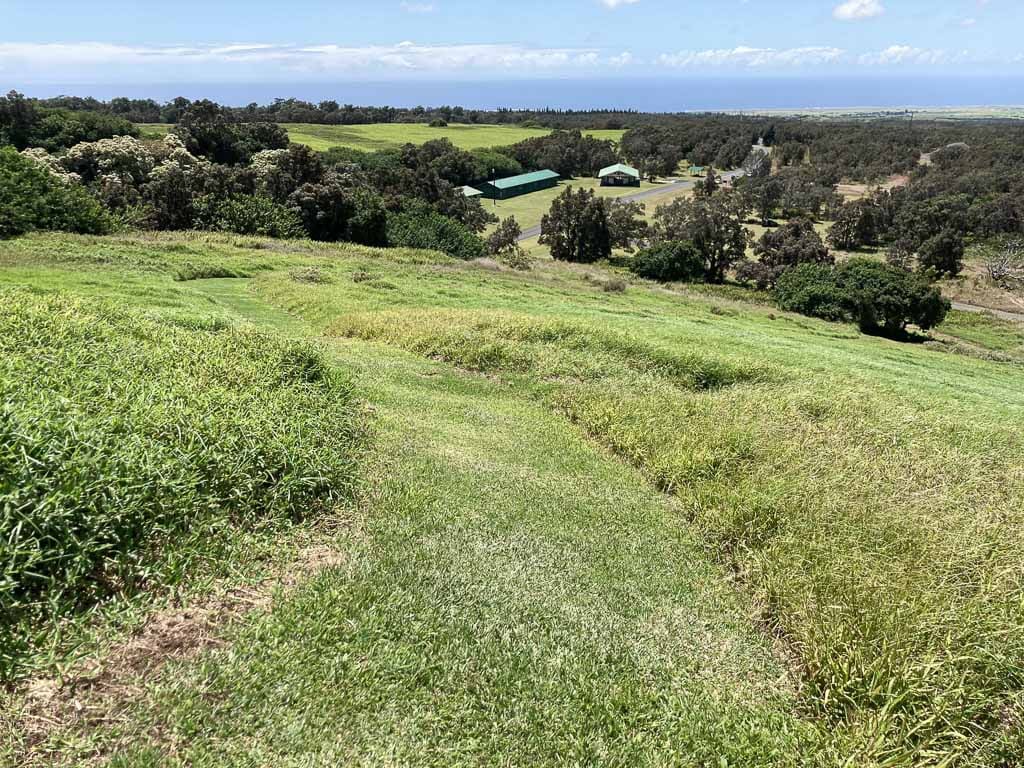
A 116,000-acre landscape of rolling hills, green meadows, groves of trees and cinder cones on the southwest slope of Mauna Loa, the Kahuku Unit was added to Hawai‘i Volcanoes National Park in 2003. This addition effectively doubled the park’s size.
Despite the area’s fascinating history—it was once home to the Kahuku Ranch, one of Hawaii’s biggest cattle ranches—and scenic beauty, many visitors skip it. Don’t be one of them! There are some unique Hawai‘i Volcanoes National Park views to be enjoyed here.
Even if you just pop into the Kahuku Unit for a quick visit on your way to Kona, it’s worth the stop. And I strongly recommend doing a short hike to experience this entirely different part of Hawai‘i Volcanoes National Park.
For a beautiful view of this lush landscape, I recommend the short Pu‘u o Lokuana Cinder Cone Loop. This wonderful 0.5-mile loop trail begins at the Visitor Contact Station near the start of the Kahuku Road.
It quickly climbs the grassy slopes of the Pu‘u o Lokuana Cinder Cone, its summit treating you to a stunning panorama of the area’s meadows and woodlands. You can clearly see the Pacific Ocean from here, too.
Best Views of Kīlauea Caldera in Hawai‘i Volcanoes National Park
6. Volcano House
Location: Kīlauea Crater
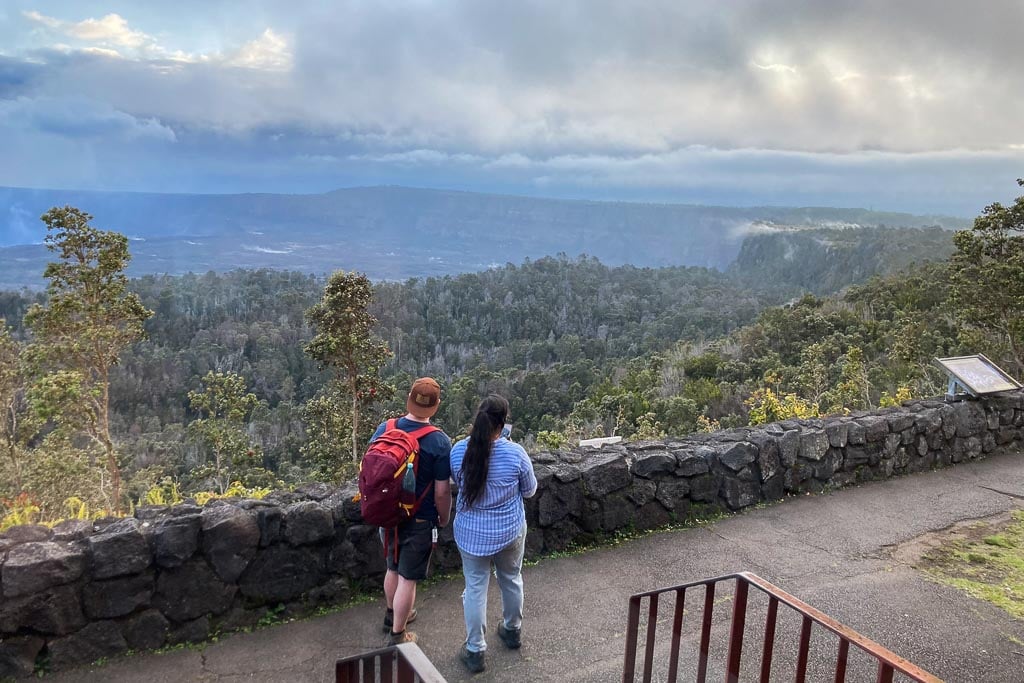
Perched on the rim high above Kīlauea’s huge Halemaʻumaʻu crater, Volcano House is the only lodging option in Hawai‘i Volcanoes National Park.
You don’t have to stay there, though, to enjoy the spectacular views. Dating from 1846, this historic lodge also has gift shops and restaurants for day visitors.
Just outside the back door—and even from certain seats in the restaurants—there’s a sensational view of the Halemaʻumaʻu crater.
7. Kīlauea Iki Overlook
Location: Kīlauea Crater
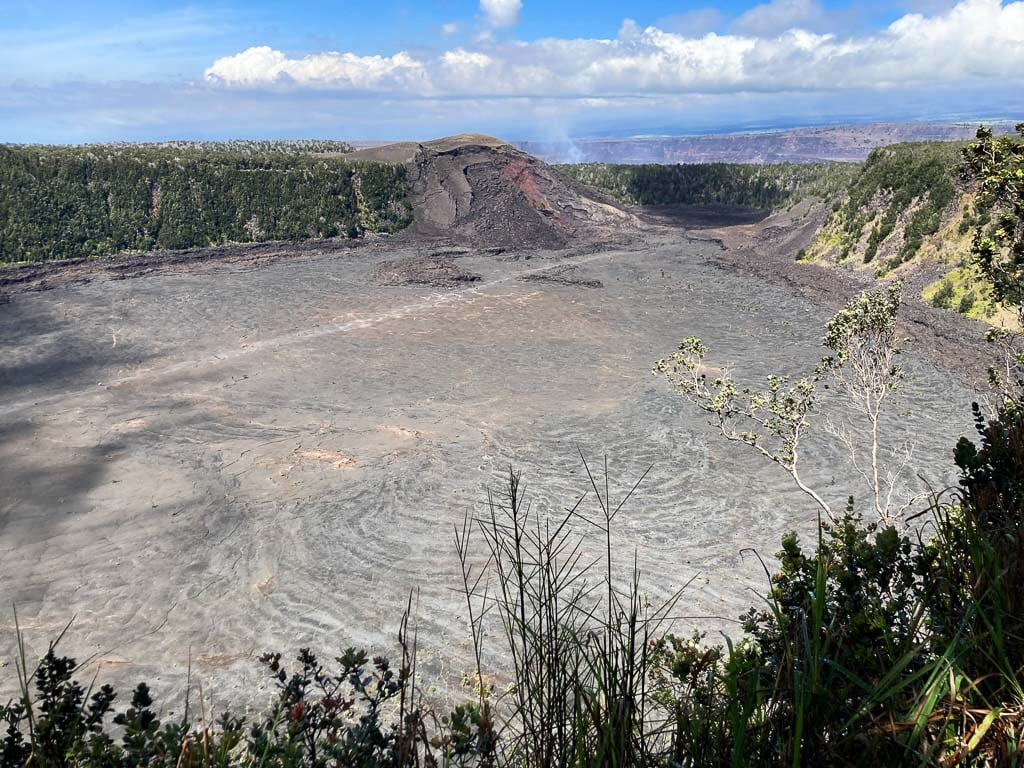
A side crater of the main Halemaʻumaʻu crater, Kīlauea Iki literally means “little Kīlauea.” This stunning pit crater is visible from the Crater Rim Drive, while a trail takes hikers into the crater itself.
For a great view of the Kīlauea Iki crater, none is better than the appropriately named Kīlauea Iki Overlook.
The vista takes in the entire crater, which is a mile long, 3,000 feet wide and 400 feet deep. Nowadays, the landscape is peaceful and quiet, but things were very different in 1959. Less than a century ago, the Kīlauea Iki crater was “a seething lava lake, with lava fountains up to 1,900 feet high,” the Park Service says.
Also pay attention to the giant cinder cone on the left side of the crater. Known as Puʻupuaʻi, it formed when cinders fell down from those enormous lava fountains, which were some of the tallest ever recorded.
8. Uēkahuna Overlook
Location: Kīlauea Crater
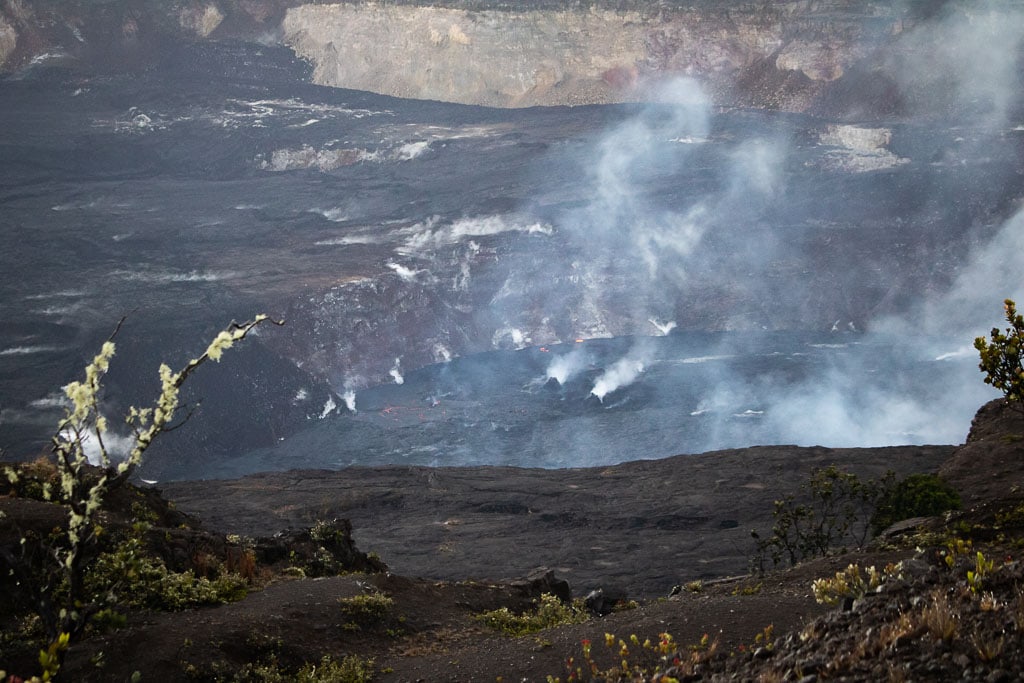
Before the massive eruption and collapse of the Kīlauea caldera in 2018, the Crater Rim Road circled all the way around the Halemaʻumaʻu crater.
Now, however, the western portion of the road is completely gone and the Uēkahuna Overlook is its western terminus. As the highest point on the Halemaʻumaʻu crater, Uēkahuna offers some spectacular views of the volcano below.
Additionally, when facing the crater, you can also see the surrounding area. Turn around and Mauna Loa towers in the distance.
And if you’d like to see the ongoing eruption of Kīlauea, this is one of the best places to do so. Especially at night, you can see the glowing red-hot magna of the lava lake in the crater deep below.
Uēkahuna is a sacred site for Native Hawaiians, a place where cultural practices take place to honor Pelehonumea, the Hawaiian volcanic diety.
9. Kīlauea Overlook
Location: Kīlauea Crater
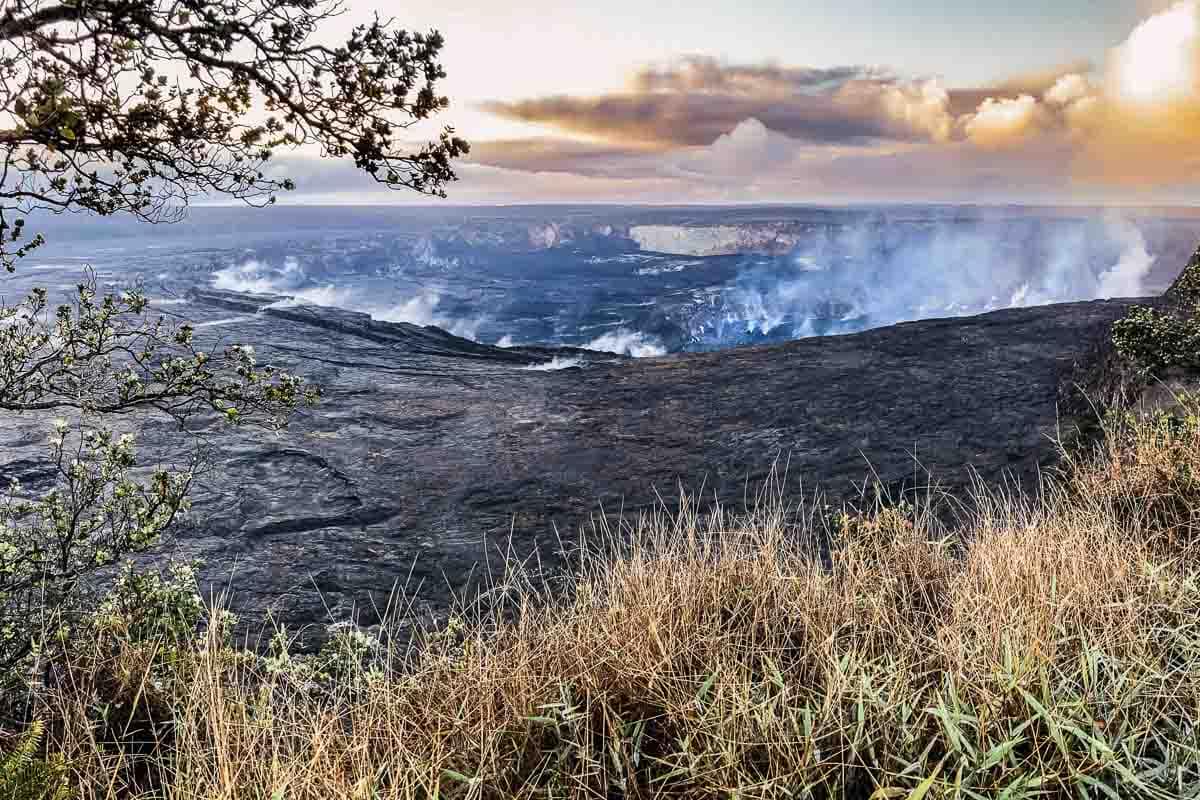
Located near the Uēkahuna Overlook, the Kīlauea Overlook is my personal favorite of all viewpoints in Hawai‘i Volcanoes National Park. The wonderful Crater Rim Trail (see below) connects these two overlooks.
From the Kīlauea Overlook, you can take in “the most dramatic views of Kaluapele (Kīlauea caldera) and Halemaʻumaʻu crater,” according to the National Park Service. You can clearly see the aftermath of the gigantic collapse of the crater during the historic 2018 eruption.
I recommend visiting the Kīlauea Overlook at sunrise—it’s phenomenal.
10. Crater Rim Trail
Location: Kīlauea Crater

The Crater Rim Trail used to run all the way around the Kīlauea caldera, until the 2018 eruption destroyed its western part. Now, the trail extends from Uēkahuna in the northwest to just beyond the Keanakākoʻi crater in the southeast.
As the longest trail in Hawai‘i Volcanoes National Park’s Kīlauea caldera, the 11-mile Crater Rim Trail runs past and sometimes even overlaps most other trails in the area.
On the way, it passes by numerous awe-inspiring views, such as at the Kīlauea Overlook and along Waldron Ledge. It also overlaps a part of the magnificent Kīlauea Iki Crater Loop and provides access to the popular Nāhuku (Thurston Lava Tube).
Because of its relatively long one-way distance, most visitors hike only a section of the Crater Rim Trail, which is what I’d recommend, too.
I encourage you to explore the section between Uēkahuna and the Kīlauea Overlook for some of the best views in Hawai‘i Volcanoes National Park.
Other sections worth walking are the Steam Vents and Sulphur Banks area, and the Crater Rim Trail from Volcano House to Waldron Ledge.
Have You Had the Opportunity to Enjoy the Amazing Views in Hawai‘i Volcanoes National Park? What Are Your Favorite Hawai‘i Volcanoes Viewpoints? Share Your National Parks Experience Below!
More Spectacular Views in the National Parks
- 5 Stunning Views of Crater Lake, Oregon
- 13 Best Fall Foliage Views on Skyline Drive
- 12 Incredible Views in Acadia National Park
- Iconic Overlooks and Viewpoints in the National Parks
- 9 Best Places to See Mount Rainier in Its Namesake National Park
- Where to Watch the Sunset in Shenandoah National Park
- 10 Fantastic Photo Locations in Glacier National Park
- All 16 Overlooks in Badlands National Park
- Top 12 Best Views of the Teton Mountains in Grand Teton National Park

